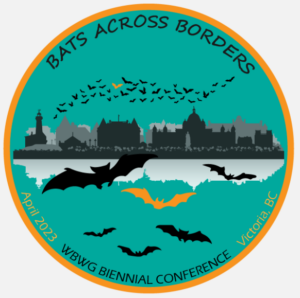WRA Presenting at the Western Bat Working Group Conference (British Columbia)
The Western Bat Working Group is hosting its Biennial Meeting April 17-21, 2023 in Victoria, British Columbia. The workshop and theme of the conference will be Bats Across Borders to take advantage of hosting the first conference in Canada and talk about international bat conservation issues. Workshop topics will include: across-border conservation issues, migratory bat conservation issues, wind, energy impacts/mitigation/issues, what tools and talents our membership can use to address conservation throughout much of North America, population/migration monitoring and data sharing, and how can WBWG be a voice and leverage our membership to address conservation at local and broad scales.
WRA Wildlife Biologist Sean MacDonald will present a talk, “Novel environmental DNA Collection Method for Identification of Roosting Bat Species” on April 20th at 11:00am.The research was conducted with fellow WRA wildlife experts Rob Schell, Katie Smith, PhD, and Cheryl Dean of GeniDaqs.
Presentation Abstract
Identification of North American microchiropterans at roost sites, especially in urban or suburban environments, is challenging. Capture and acoustic detection methods are effective, but only when bats are present, and it can result in disturbance to the bats. Analysis of guano or other physical cues can be effective, but only when present. In this study, we investigate the efficacy of genetic analysis of residues left on roosting surfaces. At two sites in Northern California, bat roosts were identified based on the presence of residues on surfaces with guano beneath them and were swabbed for trace deoxyribonucleic acid (DNA). Samples were then sequenced and identified to clade or species. This method was then compared against genetic analysis of guano and tissues present at the sample location to determine accuracy. We found that swabbing and sequencing trace DNA from the surfaces of bat roosts was sufficient to identify all species speculated to have recently used the roost based on guano and tissues, and others that were not indicated by any physical cues. This new technique has the potential to greatly improve the ability to identify which species of bats have recently utilized roost, even when no animals or physical cues are present, which will improve our ability to protect bats when roost sites must be disturbed. Further, it is cost effective and low risk to both animals and biologists. We encourage environmental professionals to consider utilizing this technique and contributing to evaluating its utility for various bat species in different habitat types.
To learn more about the event, visit the WBWG website. To learn more about WRA’s services and capabilities visit our Expertise page.




